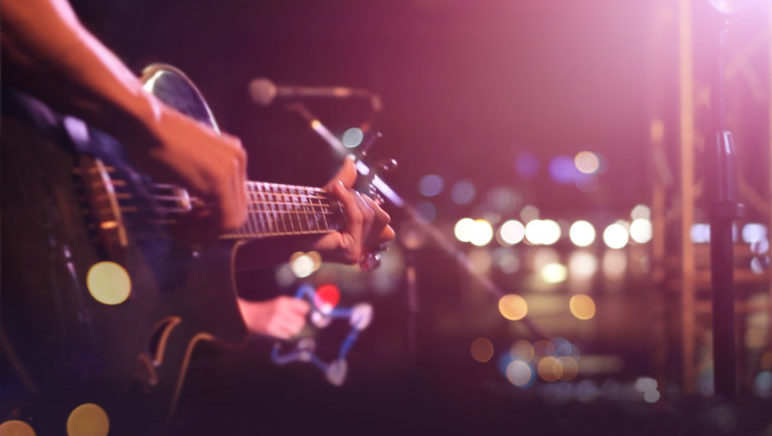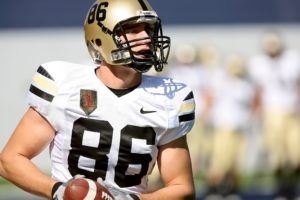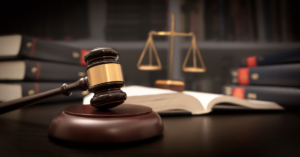Radio Law Talk Segment
Blurring the Lines with Substantial Similarity
INTRO:
An ongoing legal battle involving copyright infringement between songs may have a significant impact on the music industry. The copyright infringement claim between Marvin Gaye’s heirs and Robin Thicke and Pharrell Williams raises the question what is the difference between being inspired by another artist’s work and copying it?
FACTS (brief, 6 sentences):
The Gaye family filed suit against Robin Thicke and Pharrell Williams claiming that their song “Blurred Lines” infringes on Marvin Gaye’s copyrighted song “Got to Give It Up.” At trial, the jury returned a verdict in favor of the Gaye family, which was accompanied by a $ 7.4 million damages award, later reduced to $5.3 million. The heart of the case hinged on whether the songs were substantially similar. Thicke and Williams argued that they were only inspired by Gaye’s song and did not steal it. The artists contended that any similarities between the songs cannot be protected under copyright law. This case may importantly illuminate what elements of a song are protected for musicians moving forward.
ISSUES (Summarize both sides argument, both perspectives. You can use bullet points):
- Does “Blurred Lines” sufficiently infringe upon Gaye’s “Got to Give It Up?”
- No
- There is no substantial similarity between the two songs. Williams testified that although the songs have a late ‘70s feeling, they are distinguishable. The composers also argued that “Blurred Lines” has a different melody, rhythm, and structure from Gaye’s song. They contend that the alleged similarities identified in the songs do not contain two consecutive notes with the same pitch, duration, and placement in the measure.
- Thick argued that there is a difference between inspiration and theft.
- Under the Copyright Act it is legal to be inspired by other work because the “Copyright law is intended to serve as an ‘engine of free expression,’ with ‘imaginative works inspire[ing] new creations, which in turn inspire others.’”
- With musical composition, courts have held that some common notes are not enough to establish infringement especially because there is only a limited number of notes and chords available to composers. Also popular music has common themes frequently appear. This outcome can have a chilling effect on music creation.
- Even the purported similarities between the songs are unprotectable and commonplace ideas, such as using backup vocals.
- Yes
- The fact that the “Blurred Lines” composers acknowledged that their track was inspired by Gaye’s song should have relevance on the infringement claim. In a 2013 GQ interview, Thicke stated that he told Williams that “Got to Give It Up” was one of his favorite songs, and they “should make something like that, something with that groove.” The Gaye family contends that these statements reveal the composers plagiarized Gaye’s song.
- Additionally, Harry Weinger, a Universal Music Enterprises executive, sent emails to Universal employees about using the two songs in promotions because they were similar.
- To rebut plaintiffs assertions that this would chill music creation the Gaye family stated, “This case stands for no more and no less than the fact that the original work of an artist may not be appropriated without consent and fair compensation.”
- Some of the alleged similarities between the songs include using a cowbell, repeating a note in a melody, and using backup vocals.
- No
LAW (with references, no need for blue book citations. This is the most important part, make sure the attorneys can answer any questions from callers on the topic. You can use bullet points):
- 1976 Copyright Act = affords copyright protection to original works of authorship fixed in any tangible medium of expression
- the primary objective is to promote the Progress of Science and useful Arts.
- There is a distinction between ideas and expression: only expression can be copyright protected.
- To establish infringement two elements must be proven:
- (1) ownership of a valid copyright in the work that has allegedly been infringed; and
- (2) copying of constituent elements of the work that are original
- To Win a Copyright infringement suit, the Plaintiff must prove:
- (1) The plaintiff owns a valid copyright – has all the requirements of a valid copyright
- (2) originality of the work
- (3) The defendant actually copied the plaintiff’s work/had access to it- OR – the work was so substantially similar that the Plaintiff does not need to prove that Defendant had access to it
- (4) An ordinary observer would conclude that the defendant’s work was substantially similar to the plaintiff’s work (focuses on what the jurors think)
- The defendant’s knowledge and intent are irrelevant
- (DEFENSE) Fair Use Doctrine – permits minor use of copyrighted work when the use does not materially affect the rights of the copyright owner. This seeks a balance between protecting copyright owner’s monopoly and allowing the public to benefit from use of the work. It is for purposes such as news reporting, teaching, scholarship, research, etc. To determine whether the use is fair, factors to consider SHALL include:
- (1) The purpose and character of the use, including whether such use is of a commercial nature or is for nonprofit educational purposes;
- (2) The nature of the copyrighted work
- (3) The amount and substantiality of the portion used in relation to the copyrighted work as a whole;
- (4) and, The effect of the use upon the potential market for or value of the copyrighted work
- Selle v Gibbs, 741 F.2d 896 (7th Cir. 1984):
- This is a case where the Plaintiff alleged the Bee Gees infringed on his song, claiming they copied the melody, not the lyrics. He had played the song a few times in Chicago and sent the tape and sheet of music to various music recording studios and publishing companies.
- The court found that for infringement, the plaintiff must show (1) access and (2) similarity
- striking similarity = such similarities are of a kind that can only be explained by copying, rather than by coincidence, independent creation, or prior common source
- The similarities also must appear sufficiently unique or complex as to make it unlikely that both pieces were copied from a prior common source
- in order for proof of striking similarity to establish a reasonable inference of access, the plaintiff must show that the similarity is of a type which will preclude any explanation other than that of copying
- In determining substantial similarity, an extrinsic test is conducted. This is where the court or jury must first filter out and disregard unprotectable elements including basic ideas and concepts, situations, and incidents that flow naturally from generic plot lines. Under this, the same ideas can be used, just not the same type of expression. After filtering out unprotectable elements, the jury or court inquires into whether protectable elements are strikingly similar.
- With musical composition, courts have held that some common notes are not enough to establish infringement especially because there is only a limited number of notes and chords available to composers. Also popular music has common themes frequently appear.
DETAILED FACTS (tell the story):
This case is currently on appeal before the Ninth Circuit. Oral argument was held on October 6, 2017, where reports indicated the three judges appeared skeptical about overturning the district court’s $5.3 million punishment against Robin Thick and Pharrell Williams for copying Marvin Gaye’s “Got to Give it Up” song in “Blurred Lines.” The Gaye family owns the copyright for “Got to Give It Up.” During litigation, Gaye’s commercial recording of “Got to Give It Up” was initially ruled inadmissible because the recording contains musical elements not found in the composition of the song in the copyright deposit sheet music. The Gaye family could not play the full sound recording to the jury. However, later in the proceedings, the judge allowed the family to create a new version of the old recording that did not have the unprotectable portions. The jury found that the songs were substantially similar and awarded the Gaye family $7.4 million, which the U.S. District Judge John Kronstadt reduced to $5.3 million. Williams and Thicke appealed to the Ninth Circuit arguing the lower court erred as to weighing what claims could move forward on summary judgment. They also assert that not having jury instructions requiring jurors to disregard Gaye’s “groove” was reversible error. During the Ninth Circuit hearing, musicians including Hans Zimmer and band members from Linkin Park and Poison appeared in support of Williams and Thicke arguing that the lower court judgment would create a precedent that punishes artists. Kathleen Sullivan, Thicke and Williams, attorney argued to the Ninth Circuit that the lower court allowed back door evidence from Gaye’s recording to come in through expert testimony. Attorney Lisa Blatt argued for the Gaye family stating that the Ninth Circuit should affirm and noting that the Gayes has to show sheet music to prove copyright infringement when the court should have allowed the family to play the original song recording.
OTHER FACTS (interesting facts, related facts, trivia, etc.):
- “Blurred Lines” reportedly generated nearly $17 million in revenue for the record label and musicians involved.
ARTICLE LINKS (so we can print them out):
- https://www.americanbar.org/content/dam/aba/publications/communications_lawyer/summer2015/CL_Sum15_v31n3_Ardebili.authcheckdam.pdf
- http://blogs.findlaw.com/ninth_circuit/2017/10/blurred-lines-gets-focused-attention-from-appeals-court.html
- https://www.courthousenews.com/ninth-circuit-considers-blurred-lines-retrial/
MEDIA (less than a 2 minutes FUNNY sound bite. You can include a couple of options. We realize that for some topics there is not much):
- Blurred Lines Music Video: https://www.youtube.com/watch?v=yyDUC1LUXSU&has_verified=1
- Marvin Gaye: https://www.youtube.com/watch?v=_V1TIsy1Zk8




